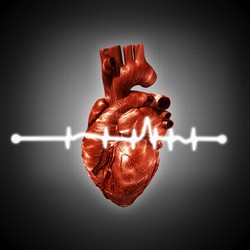Towards improved diagnosis and treatment of atrial fibrillation
Atrial fibrillation (AF) is a condition involving abnormal heart rhythm. This arrhythmia is caused by the progressive transformation of the structure and functional properties of the atria and results from multiple changes at the molecular, cellular and organ levels. However, considering the many potential causes of AF, the identification of critical factors such as hypertension or diabetes presents a challenge. Furthermore, diagnosis of AF is greatly aggravated by the often asymptomatic nature of rhythm disturbance. The EU-funded EUTRAF (The European network for translational research in atrial fibrillation) network worked to develop novel treatments and diagnostic tools for AF. For this purpose, researchers analysed the data of over 545 000 AF patients using a clinical decision support system (CDSS). This CDSS constitutes the most detailed assessment tool for predicting the risk of stroke and thromboembolism in AF patients. Considerable effort went towards the investigation of the cellular and molecular mechanisms of AF. Researchers studied the interaction between cardiomyocytes and myofibroblasts, the cytokines with a function in fibrotic tissue remodelling and the role of ion channels. Scientists found a novel inverse association between AF treatment outcome and the amount of adipose tissue that accumulates around the atria. All these interactions were incorporated into a computational model and their impact on AF development was evaluated. Given that hypertension and diabetes are major predisposing factors, scientists used mouse models of these diseases to substantiate their impact on atrial molecular biology, electrophysiology, and function. From a therapeutic perspective, researchers identified novel ion channels and transporters as pharmacological targets of AF. Additional therapeutic targets were identified in the process of atrial remodelling and in the genetic contributors of AF. Furthermore, EUTRAF partners developed improved imaging tools for analysing atrial activity and diagnosing AF complexity. This non-invasive assessment enabled the prediction of AF treatment outcome in a variety of clinical settings. Overall, the EUTRAF findings provide a better understanding of the varied mechanisms involved in the development of AF. The project deliverables will improve prevention, diagnosis and therapy of AF, thereby greatly reducing European healthcare costs.
Keywords
Atrial fibrillation, arrhythmia, hypertension, diabetes, adipose tissue, ion channel, imaging



